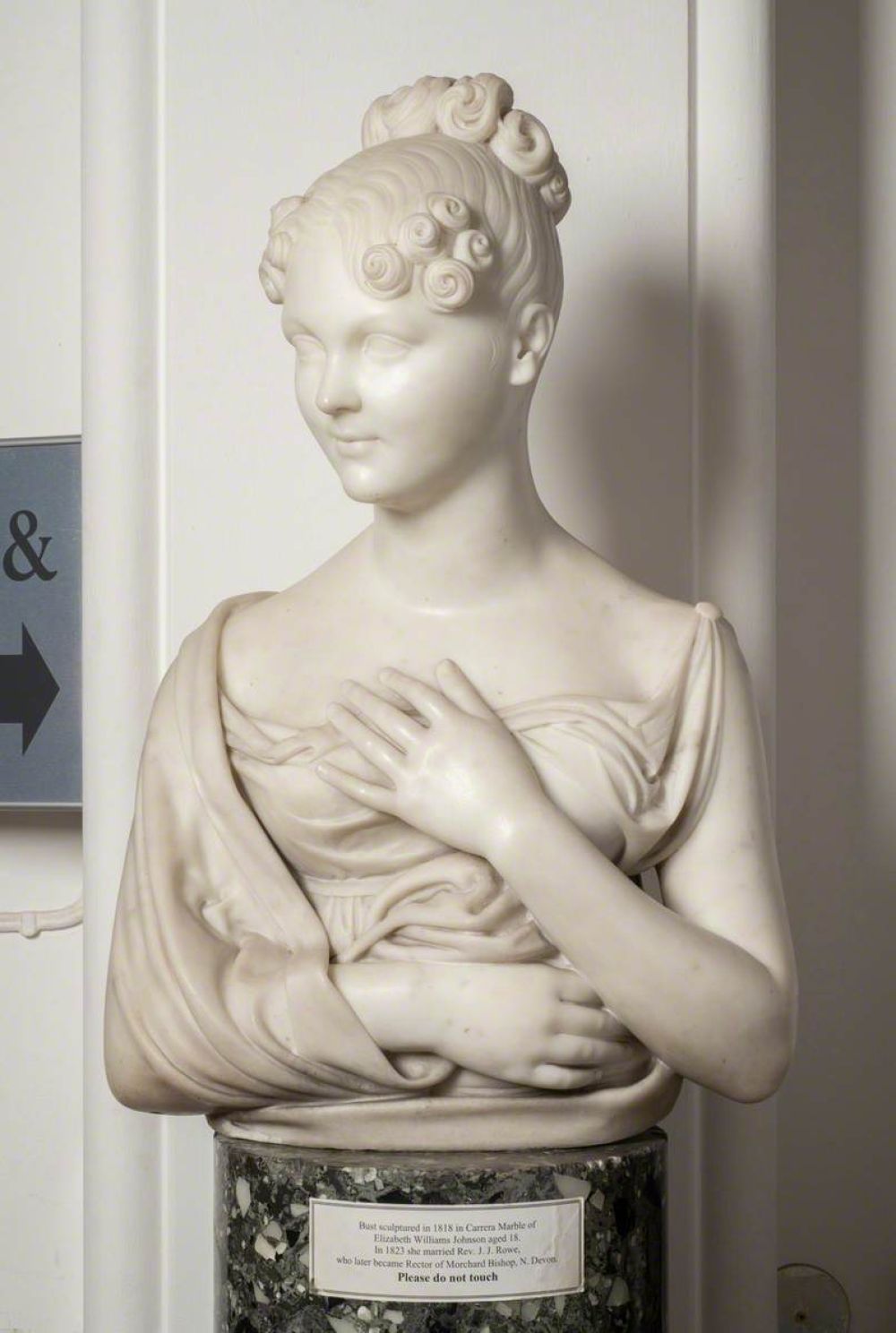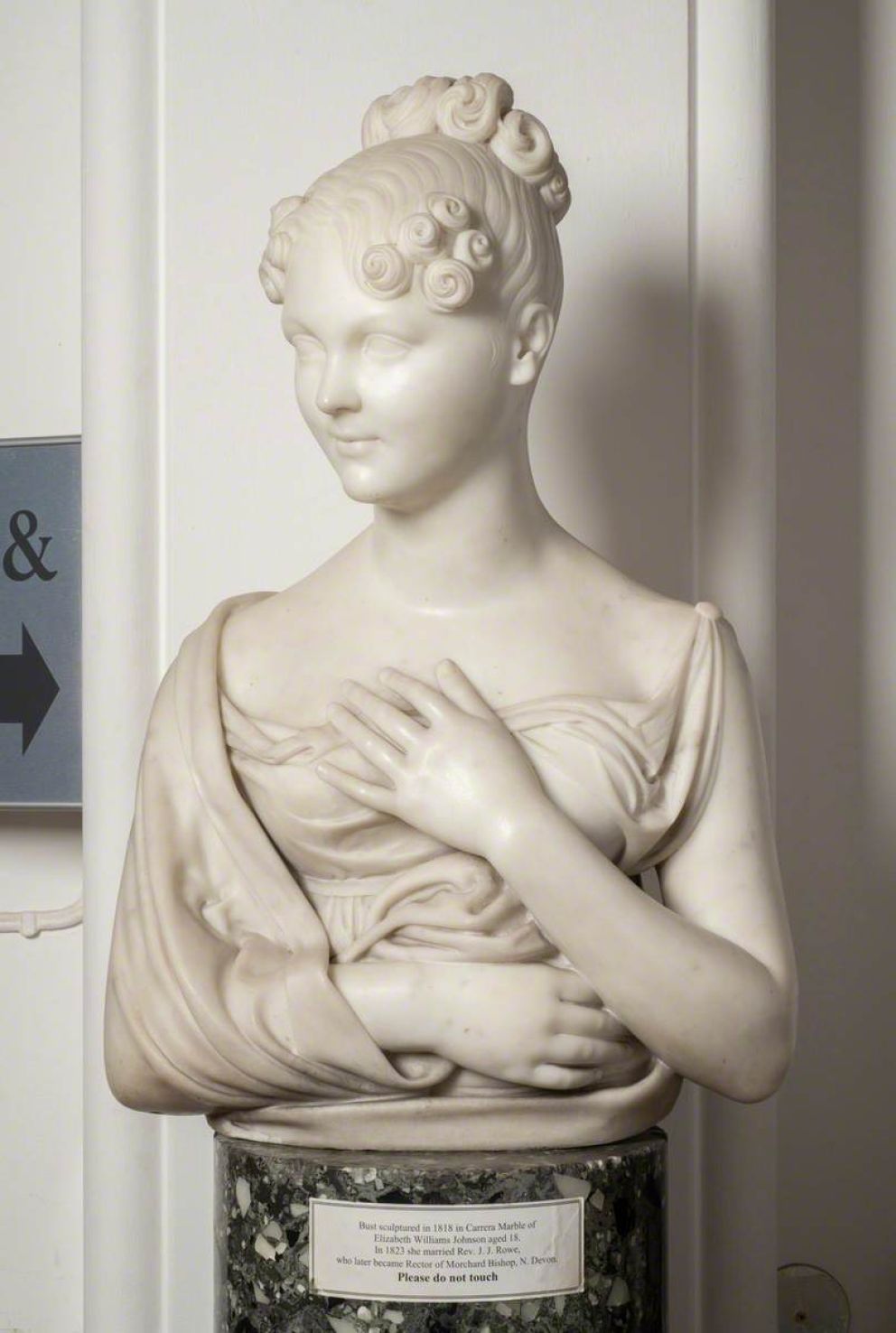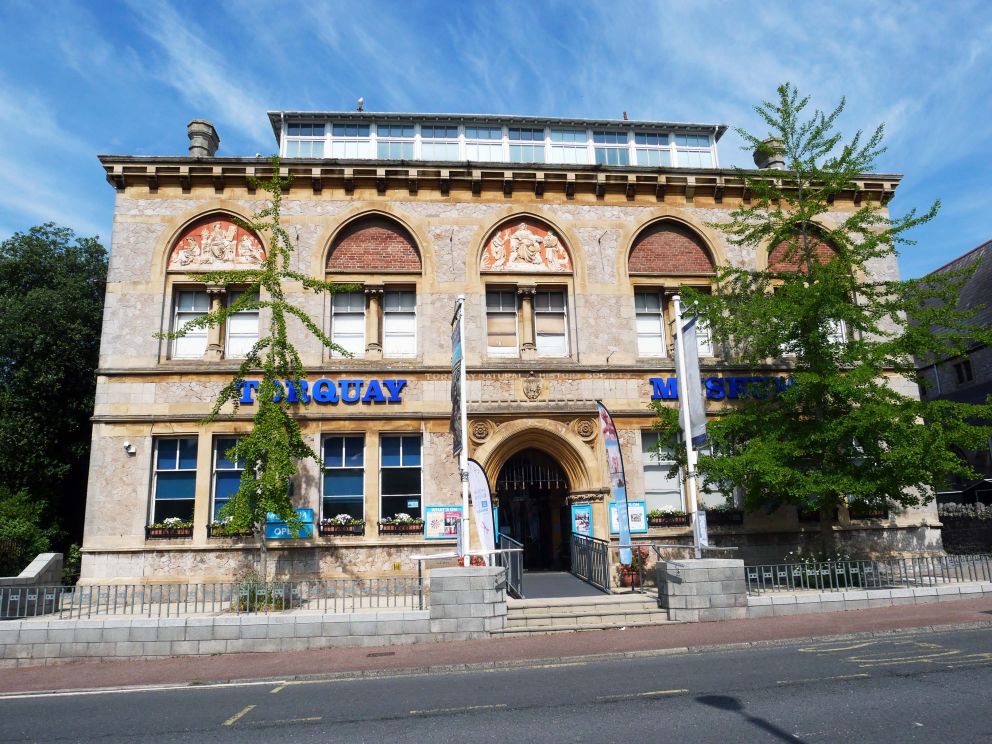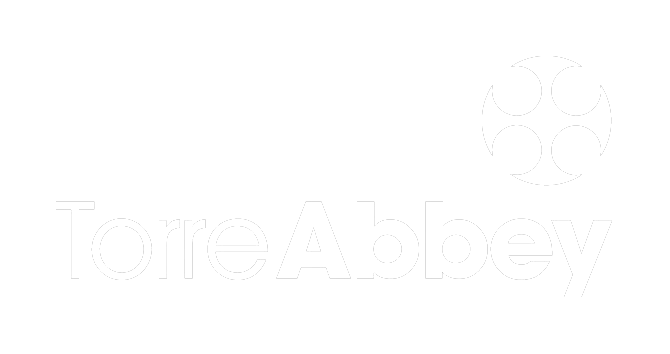Art Detectives in the Museum
 16th December, 2021
16th December, 2021
As staff working at the Museum we get very familiar with the exhibits, sometimes we think we have learnt all there is to know about an object, but often that is far from the case. This is why projects from outside that focus on our incredible collections are so important as they bring fresh eyes and new expertise.
One project, that happened a few years ago, put all of the Museum’s sculpture collection online on the ART UK database. Here high quality images of our works can be viewed by everyone around the world. This gives the opportunity for anyone to turn into an art detective and try to identify otherwise un-provenanced works.
Just inside the Museum’s front doors is a beautiful Carrara marble half-length bust (mezzo busto) format in which arms and hands are prominent elements. It is of Elizabeth Williams Johnson who married James John Rowe in Marylebone, London on the 9th September 1823. Her husband became the rector of St Mary Arches in Exeter in the 1840s. This sculpture is unsigned and we knew nothing about the maker.
Unknown to the Museum, Art detective contributor Jacinto Regalado had been researching our sculpture and provided the ART UK website with a link to a plaster version of the bust, kept in the Galleria dell'Accademia in Florence. This discovery immediately changed its status from by 'unknown artist' to 'Lorenzo Bartolini'.
Jacinto explained ‘based on the format and on stylistic grounds, I suspected this could be by Bartolini (1777-1850), which was confirmed by going through the Italian online database of his complete works. It contains a plaster version of this and the mezzo busto was often used by the Florentine sculptor who had British clients drawn from visitors to Florence’ (hence many works by him are in the UK).
Bartolini was born near Prato, Tuscany. After studying at the Florentine Academy of Fine Arts he gained a reputation as a modeller in alabaster. He went to Paris in 1797, where he studied painting and afterwards sculpture. The bas-relief Cleobis and Biton, with which he won the second prize of the Academy in 1803, established his fame as a sculptor and gained for him a number of influential patrons.
The greatest of these was Napoleon for whom he executed a colossal bust. On the recommendation of his sister Elisa Baciocchi he was sent to the Accademia Carrara in Bergamo in 1807 to teach sculpture. He remained as the quasi-official portrait sculptor to the Buonapartes until the fall of Napoleon and eventually moved back to Florence, where he resided until his death.
The discovery of a Bartolini in the entrance hall of the Museum is quite a find. He is regarded as one of the most important early 19th century sculptors and this is quite fine example of his work. You can see the sculpture for free in the entrance hall when the Museum reopens in February 2022.

















